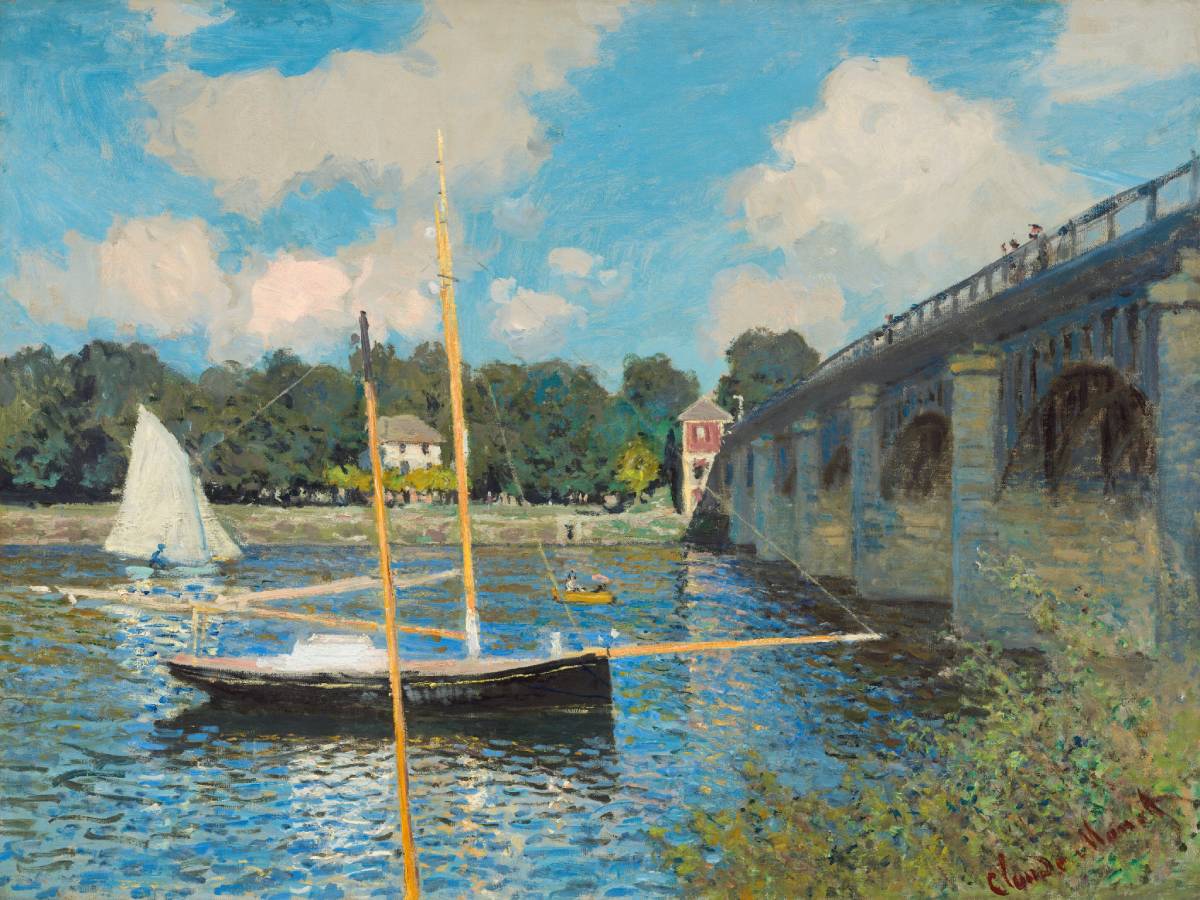Monet, Claude (1840-1926)
Le pont à Argenteuil (The Bridge at Argenteuil)
1874
Oil on canvas, 60 x 79.7 cm
National Gallery of Art, Washington
From a distance of ten feet or so, Monet‘s brushstrokes blend to yield a convincing view of the Seine and the pleasure boats that drew tourists to Argenteuil. Up close, however, each dab of paint is distinct, and the scene dissolves into a mosaic of paint—brilliant, unblended tones of blue, red, green, yellow. In the water, quick, fluid skips of the brush mimic the lapping surface. In the trees, thicker paint is applied with denser, stubbier strokes. The figure in the sailboat is only a ghostly wash of dusty blue, the women rowing nearby are indicated by mere shorthand. In the early years of impressionism, Monet, Renoir, and others strove to capture the fleeting effects of light and atmosphere on the landscape and to transcribe directly and quickly their sensory experience of it. Monet advised the American artist Lilla Cabot Perry, “When you go out to paint, try to forget what objects you have before you, a tree, a house, a field or whatever. Merely think here is a little square of blue, here an oblong of pink, here a streak of yellow, and paint it just as it looks to you, the exact color and shape, until it gives your own naïve impression of the scene before you.” Two sailboats and a rowboat float on a glistening, azure-blue river spanned by a stone bridge to our right in this horizontal landscape painting. The scene is loosely painted with visible strokes and dashes throughout so some details are indistinct. An area of asparagus and moss-green dabs creates a patch of grassy riverbank in the lower right corner of the painting. The rippling, sun-dappled surface of the river is created with short parallel strokes of pale pink, caramel brown, white, sage green, and light blue. An empty sailboat, with its sails tightly furled or removed all together, floats near us to our left of center. It has a single tall, pale wood mast. A similar pole rises from the bottom edge of the picture, presumably the mast of another ship below us or out of our view. Farther out on the water and to our left is another sailboat with full white sails catching the sunlight. The final vessel is loosely painted with a few swipes of goldenrod yellow, black, white, and pink to suggest two people sitting in a rowboat, one of them holding a pink parasol. The gray stone bridge is shaded on our side with denim blue along the faces of the four arches we can see. Several people, painted with a few touches of peach and black, stand at the railing. The bridge angles from near the upper right corner of the canvas to almost the middle of the composition, where it meets a narrow, three-story coral-pink and light gray building. A two-story, white building sits a short distance to its left. They bask in warm sunlight against a row of emerald and olive-green trees. A baby-blue sky scattered with puffy white clouds spans the upper half of the composition. The artist signed the lower right with dark red letters, “Claude Monet.” (NGA)
See also:
• Argenteuil (France)
